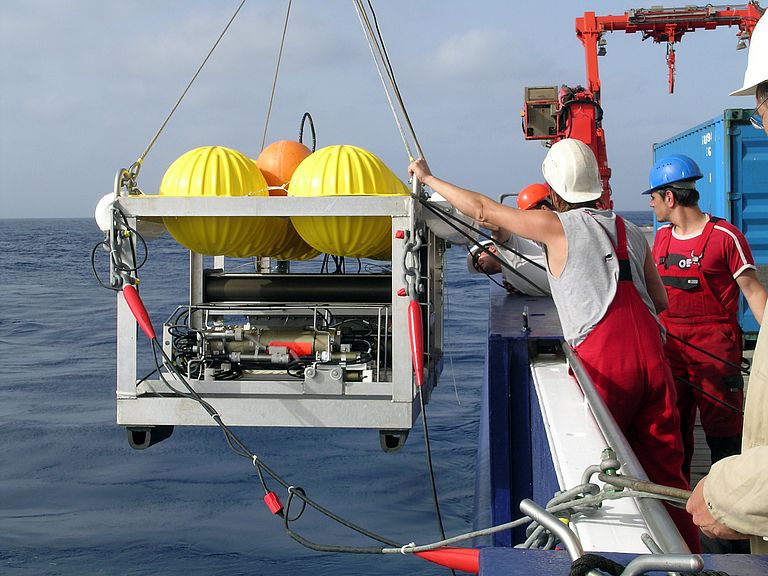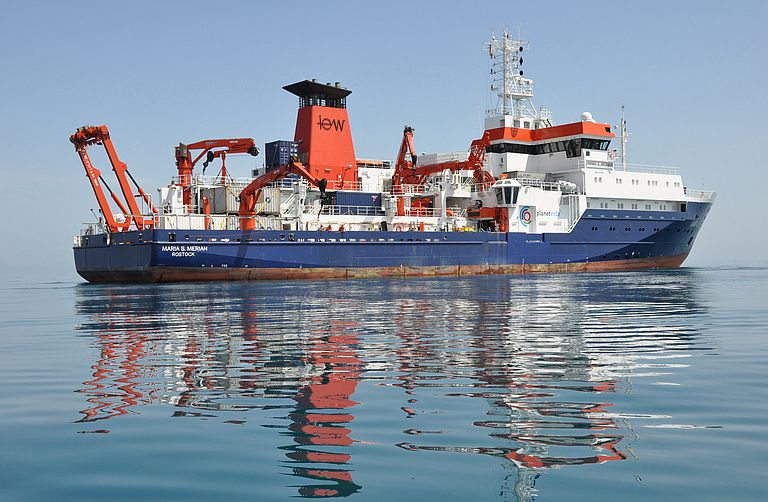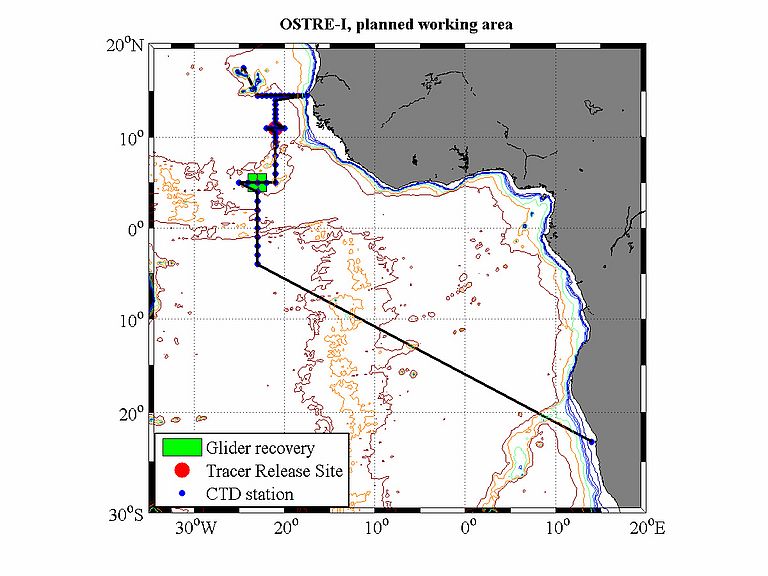Expedition off the Coast of West Africa
Second Assignment for Special Water Marking System in the Atlantic
The tropical Atlantic is becoming almost a second home for marine researchers from Kiel. Numerous expeditions take them to this scientifically interesting area every year. “Important ocean currents are there, storms carry Sahara sand as fertilizer into the Atlantic and in some regions there is hardly any oxygen dissolved in the sea water” explains Professor Dr. Martin Visbeck, physical oceanographer at GEOMAR Helmholtz Centre for Ocean Research Kiel. The rough structures are thus known; however the details of the interaction between ocean and atmosphere, the exact distribution of oxygen as well as the development of the oxygen minimum zone with rising water temperatures resulting from climate change are still puzzling scientists. Therefore two research groups from Kiel are in the tropical Atlantic this autumn, gathering new data. They use, amongst other instruments, automatic measuring systems which are either fixed or dive independently. The first of the two expeditions, lead by Professor Dr. Peter Brandt from GEOMAR, ends today in Mindelo on the Cape Verde Islands. On the 26th of November the MARIA S. MERIAN, lead by Professor Visbeck, will set sail for the second part of the research campaign.
Both expeditions are part of the Collaborative Research Centre (SFB) 754 which is financed by the German Research Foundation (DFG). In this project, scientists from GEOMAR and Kiel University are examining biological, geological, and chemical interactions in the tropical oceans. During the journey starting on Monday, the focus will be on if and how much oxygen is brought into the oxygen minimum zone by currents and turbulences from outside the zone. Scientists will use a special device, the Ocean Tracer Injection System (OTIS) which will emit non-toxic, chemically inert tracer substances in the middle of the oxygen minimum zone at a depth of 450 metres. They will then be able to precisely trace its distribution during measuring campaigns during the next three years. “In this way we will be able to understand and quantify the mixing processes of the sea water” explains the marine chemist Dr. Toste Tanhua from GEOMAR and adds, “When we understand these processes, we can better estimate how environmental change, for example a rise in water temperature, affects the oxygen minimum zone.” OTIS was used successfully in 2008 in a similar study in the tropical Atlantic. Only one other identical device exists in the world which can place tracer substances in the open ocean so precisely.
In addition the scientists will retrieve a swarm of measuring probes, called “Gliders”. These were released during the previous expedition and have been independently measuring different factors such as pressure, water temperature, salt level, oxygen level and chlorophyll inside the oxygen minimum zone.
During the upcoming expedition, the scientists will be assisted by two pupils from Schleswig-Holstein. “Pupils were also part of the SFB’s 2008 research expedition. The experience was so positive that we wanted to repeat it” explains Professor Visbeck. Linnea Rulle and Rike-Sophie Pöhl were selected from a large number of candidates. Both are 15 years old and live close to Kiel. They have been involved in their schools’ scientific societies and have actively participated in GEOMAR’s school projects. “In the end, we chose them because they showed commitment and brought their own ideas for small projects. Social competence was also an important criterion. After all, they will have to fit in with the crew for four weeks” says Visbeck. The two girls are integrated into the strict daily schedule of the scientists where they will be helping with laboratory work and sampling, for example. Moreover they will document the journey for other students via film and texts. The expedition ends on the 20th of December in Walvis Bay, Namibia; so Rilke, Linnea and all other scientists will be able to spend Christmas at home.
The Expedition at a Glance:
MARIA S. MERIAN Expedition MSM 23
Project: SFB 754
Duration: 26.11.2012 – 20.12.2013
Chief Scientist: Prof. Dr. Martin Visbeck, GEOMAR
Start: Mindelo (Republic of Cape Verde)
End: Walvis Bay (Namibia)
Further Information and weekly reports on the GEOMAR expedition page
Bildmaterial in höherer Auflösung:
The Ocean Tracer Injection System is launched. Photo: M. Visbeck, GEOMAR
<link fileadmin content institut ze fs download herunterladen der datei>The German research vessel MARIA S. MERIAN. Photo: JAGO-Team, GEOMAR
The working area of expedition MSM23. (c) GEOMAR
Contact:
Jan Steffen (GEOMAR, Communication & Media), Tel.: 0431 600-2811, jsteffen(at)geomar.de





